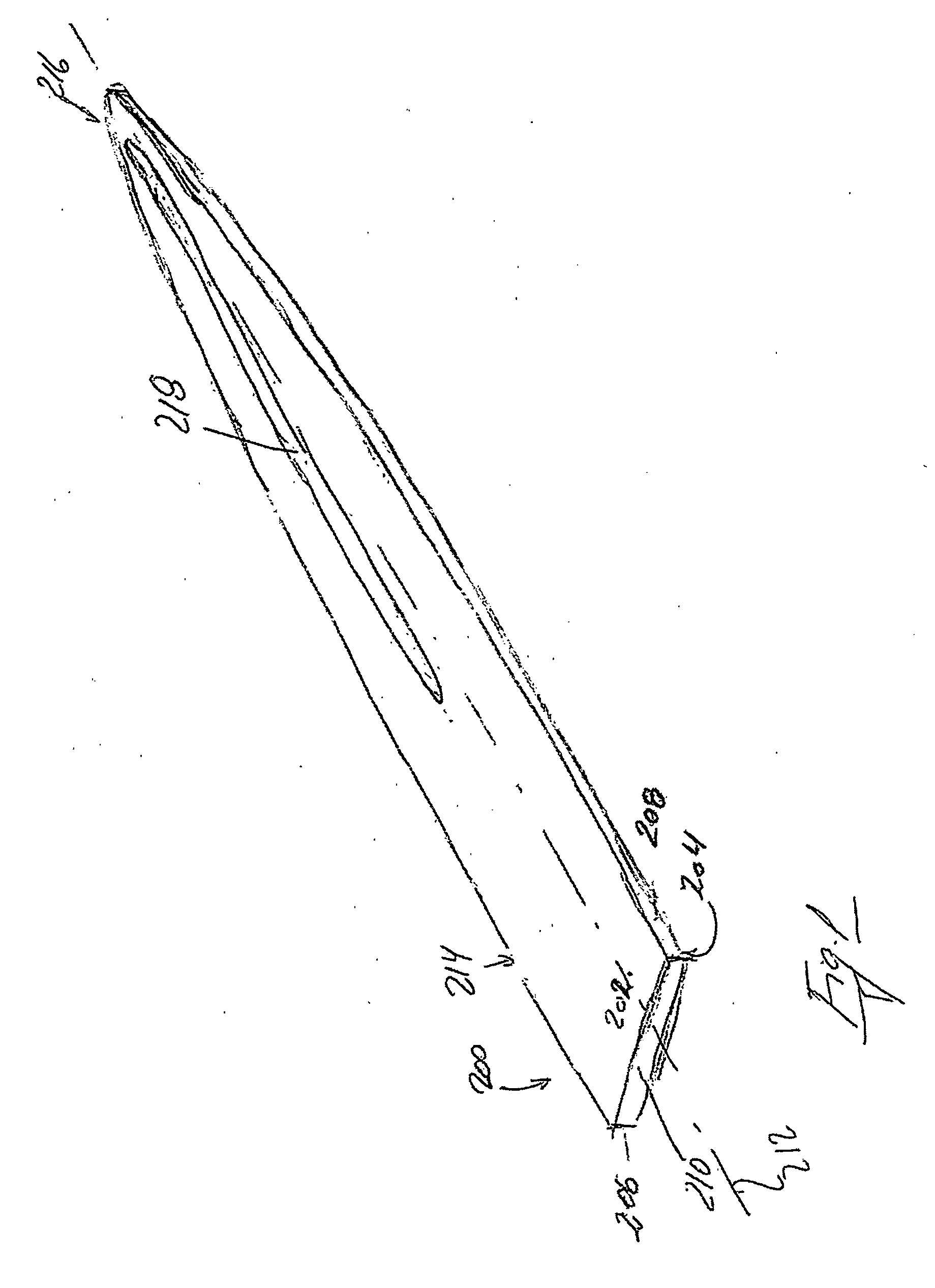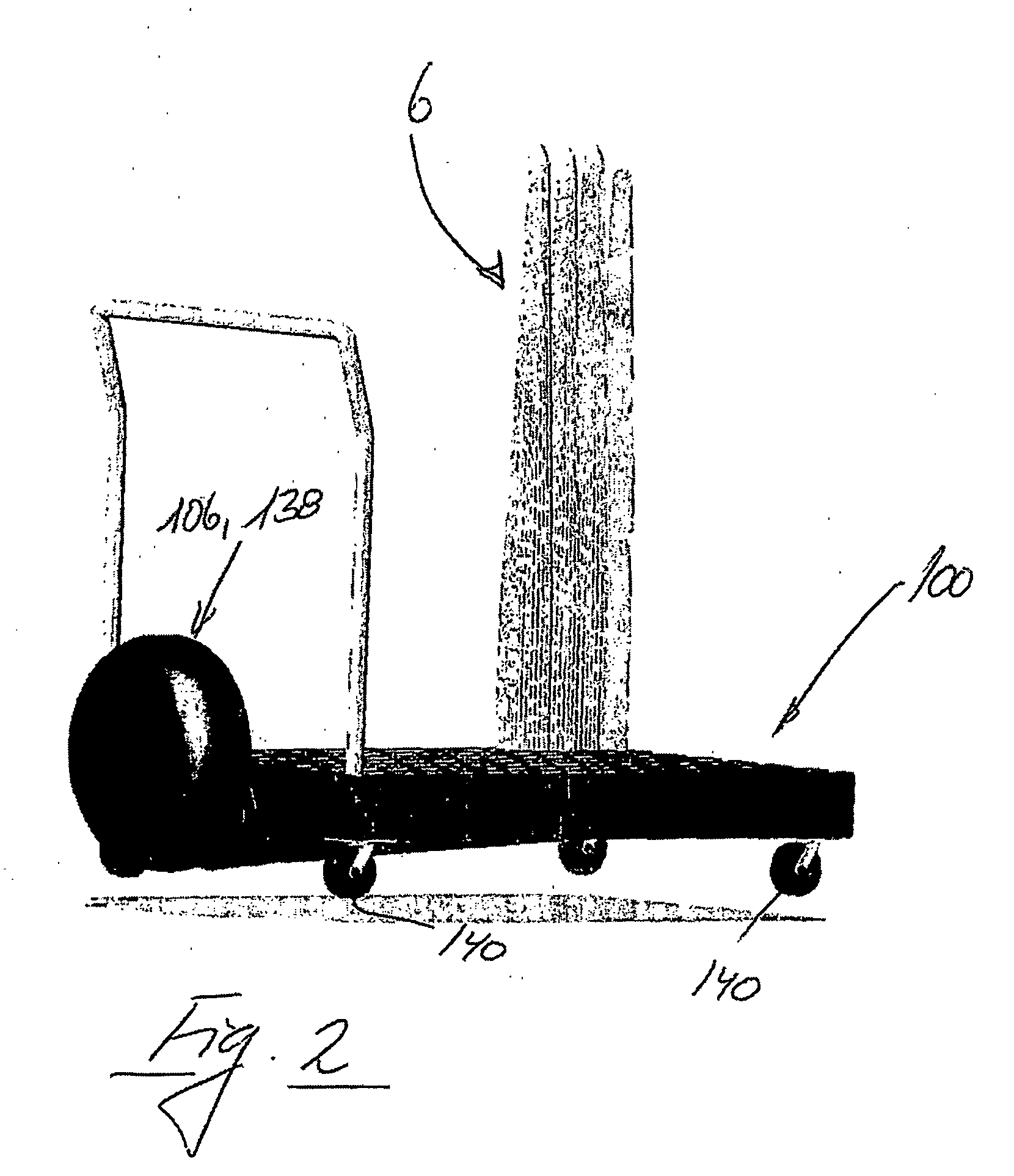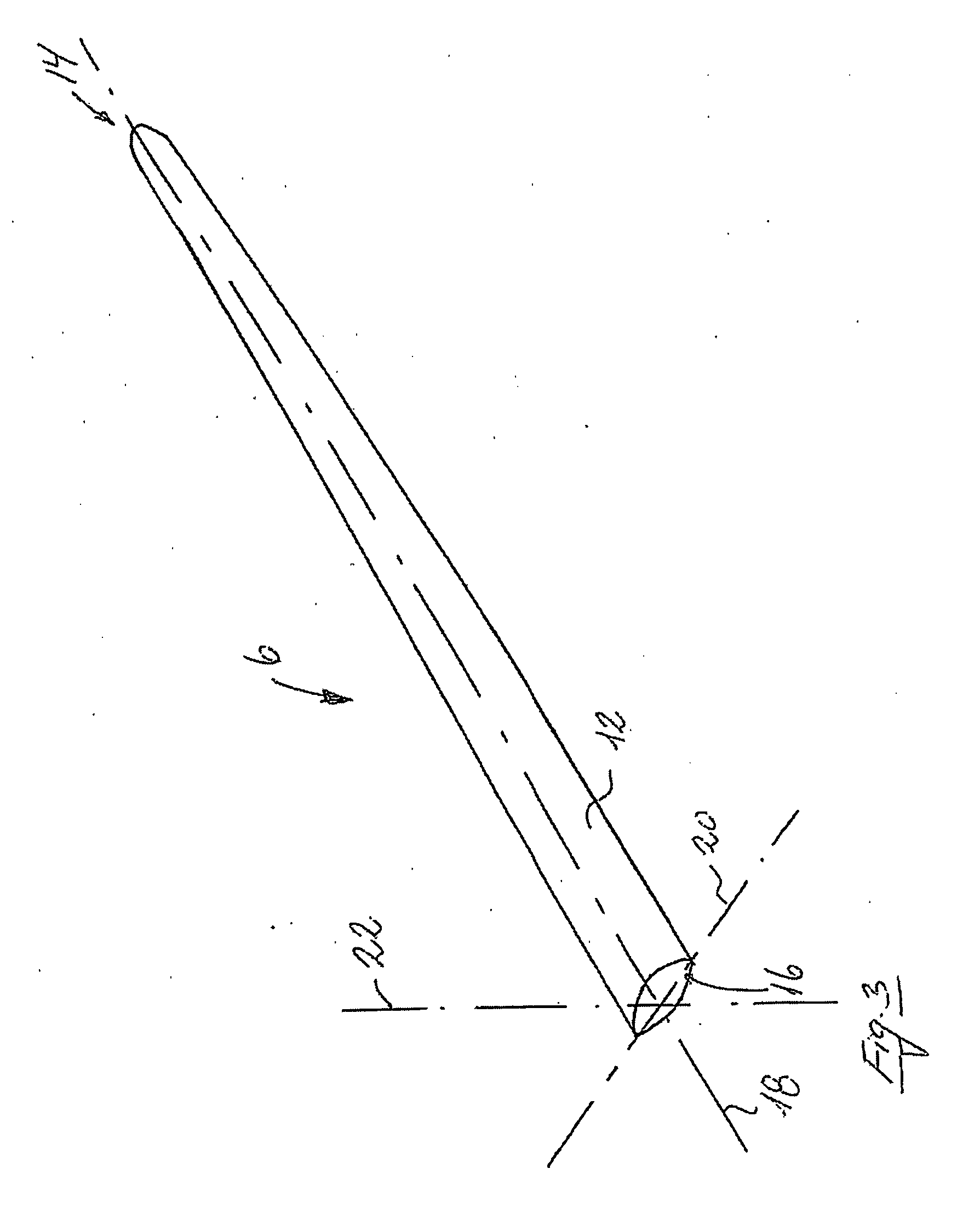Method and system for drying out the leather side of a pelt stretched out and fixed in this position on a pelt board
a technology of leather side and pelt, which is applied in the direction of leather/skins/hides/pelt mechanical treatment, skin/hides/leather/fur manufacturing apparatus, leather/skins/hides/pelt mechanical treatment, etc., can solve the problem of destroying 2-3 cm of the pelt where this is widest, unable to achieve the optimum price of pelt at the fur auction, and damage to the pel
- Summary
- Abstract
- Description
- Claims
- Application Information
AI Technical Summary
Benefits of technology
Problems solved by technology
Method used
Image
Examples
second embodiment
[0149] In FIG. 4 is shown the board 6. This has the same shape as the board shown in FIG. 3, but where the nature of the surface 12 as an open structure appears clearly as a consequence of the holes 10 in the board. In the shown embodiment, the surface 12 is provided with holes 10 between the front end 14 and to a distance in the area 15 of the board 6 near the foot end 16, where the extent of the board in the direction of the first transverse axis 12 and the second transverse axis 14 is more or less constant.
[0150] Already here it shall be mentioned that the inventor has realised that the holes 10 can assume another configuration or combination of that shown and other configurations. Moreover, in the area 15 of the board 6 near the foot end 16, where the extent of the board in the direction of the first transverse axis 12 and the second transverse axis 14 is more or less constant, the holes can be provided with edges which extend up over the surface 12. This will contribute towards...
third embodiment
[0174] It shall further be mentioned that the board 6 can be configured with other embodiments of the surface 12. In FIG. 14 and FIG. 15 there is thus shown the pelt board according to the invention, where a part of the surface has a longitudinal grooving 29 with the grooves arranged substantially parallel with the longitudinal axis 18 of the board. The distension element / pelt board 6 shown in FIG. 14 and FIG. 15 further comprises in relation to the longitudinal grooving 29 second transverse grooving / serrations 31, the extent of which, as shown in FIG. 14 and FIG. 15, is limited to a part of the area 15 of the board 6 closest to the foot end 16, and at a distance from the foot end 16, where the extent of this in the direction of the first transverse axis 20 and the second transverse axis 22 is more or less constant, to and including a part of the area 33 where the extent of the board in relation to the longitudinal axis 18 in the direction of the first transverse axis 20 and the sec...
fourth embodiment
[0175] In FIG. 16 there is shown a further and fourth embodiment of the pelt board 6 according to the invention. As indicated in the figure, but which appears more clearly in FIG. 17 and FIG. 18, this comprises the longitudinal grooving 29 in the board's lower end in the area 15, and also a transverse corrugation 31 to provide a good counter-hold on the leather side of the pelt, which is pressed against the board 6 by a fixing-bag (not shown) while it is stretched and secured in this position during the drying process. As further appears clearly from FIG. 18, which is an exploded end view of the pelt board 6, seen from the foot end 16, the half shells 48, 50 extend in an arched manner in combination with the grooving 29.
[0176] In this embodiment, as shown most clearly in FIG. 16 and FIG. 17, and to some degree also in FIG. 21, in the half part of the board nearest the pointed end 14, the distension element / pelt board 6 comprises recesses 180, 182 extending in parallel in the half sh...
PUM
 Login to View More
Login to View More Abstract
Description
Claims
Application Information
 Login to View More
Login to View More - R&D
- Intellectual Property
- Life Sciences
- Materials
- Tech Scout
- Unparalleled Data Quality
- Higher Quality Content
- 60% Fewer Hallucinations
Browse by: Latest US Patents, China's latest patents, Technical Efficacy Thesaurus, Application Domain, Technology Topic, Popular Technical Reports.
© 2025 PatSnap. All rights reserved.Legal|Privacy policy|Modern Slavery Act Transparency Statement|Sitemap|About US| Contact US: help@patsnap.com



